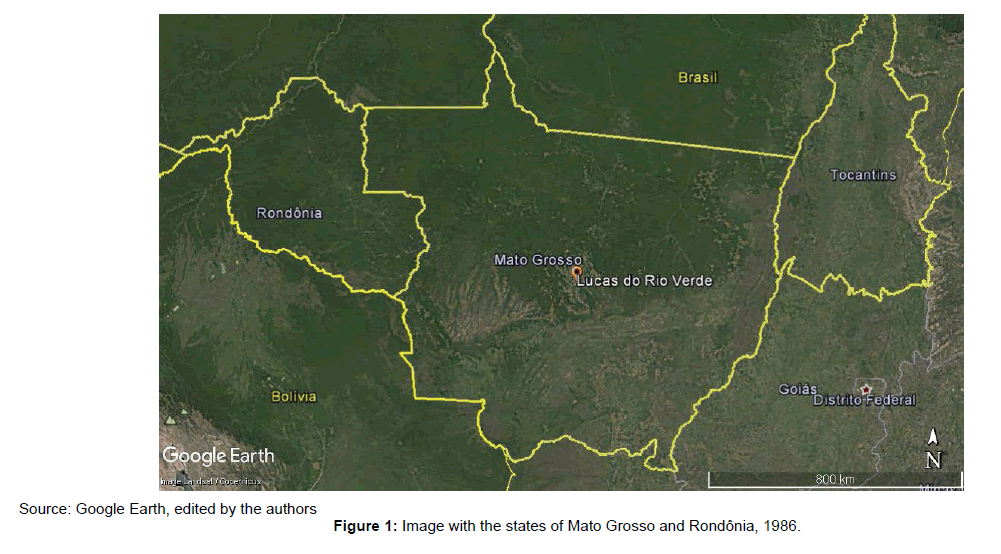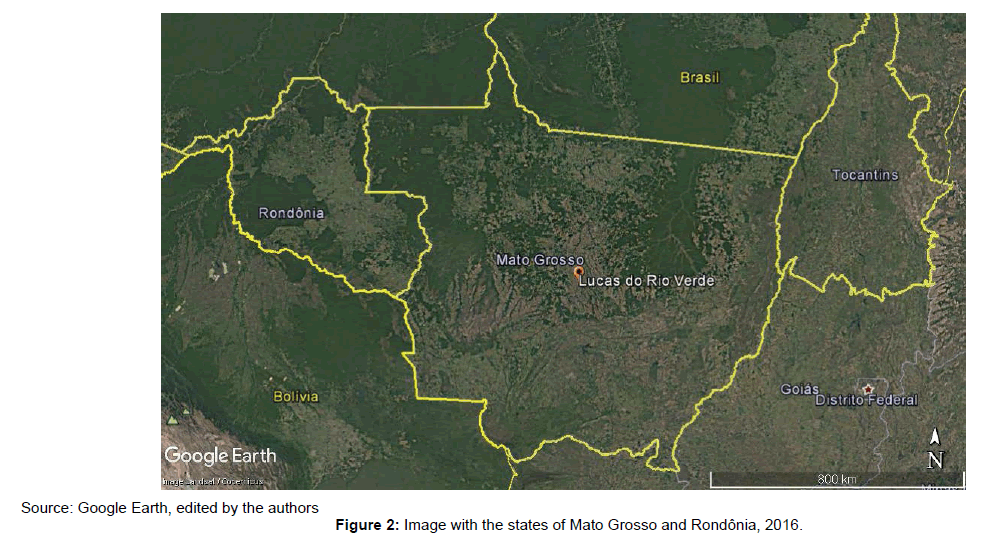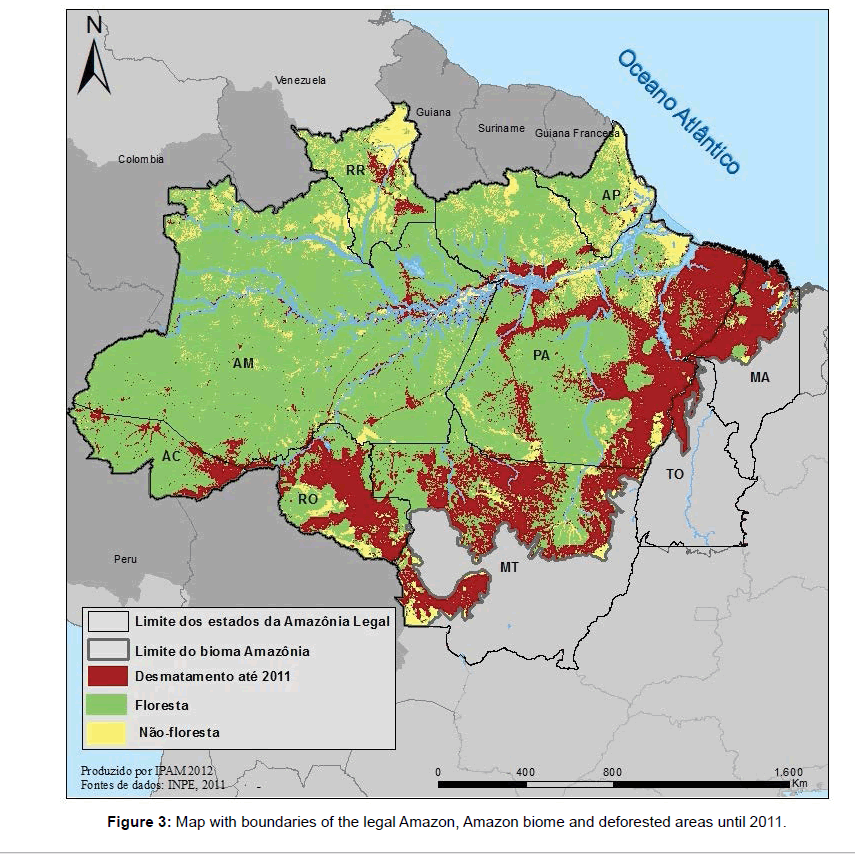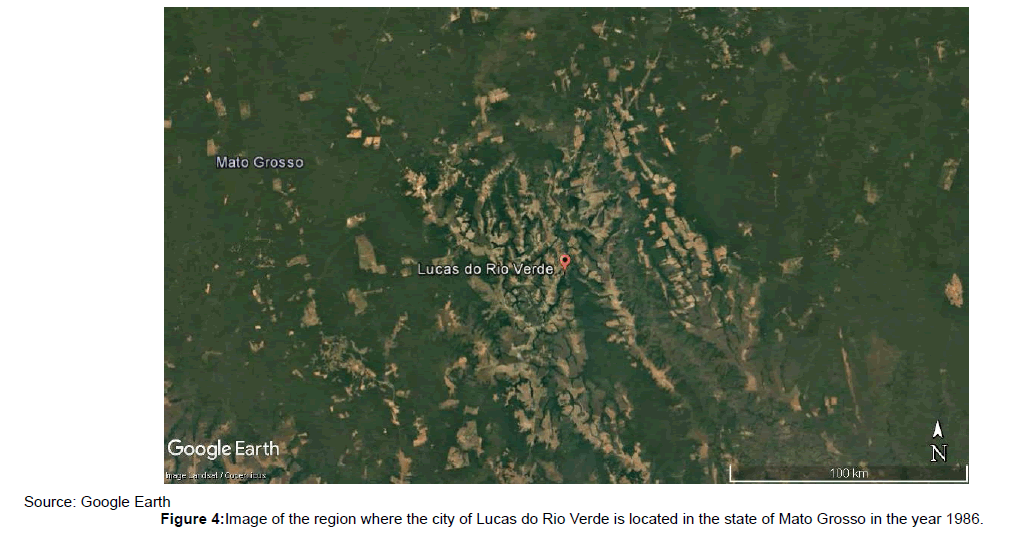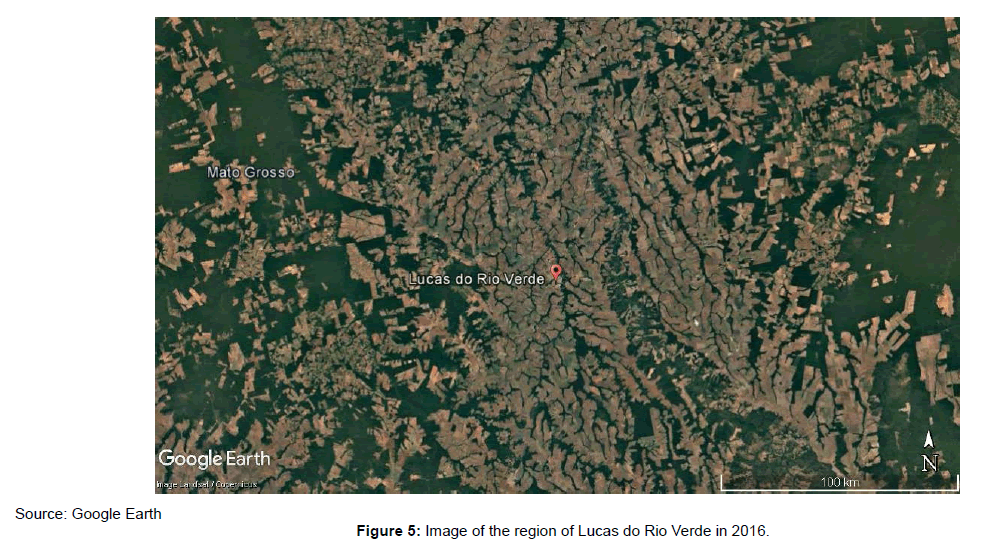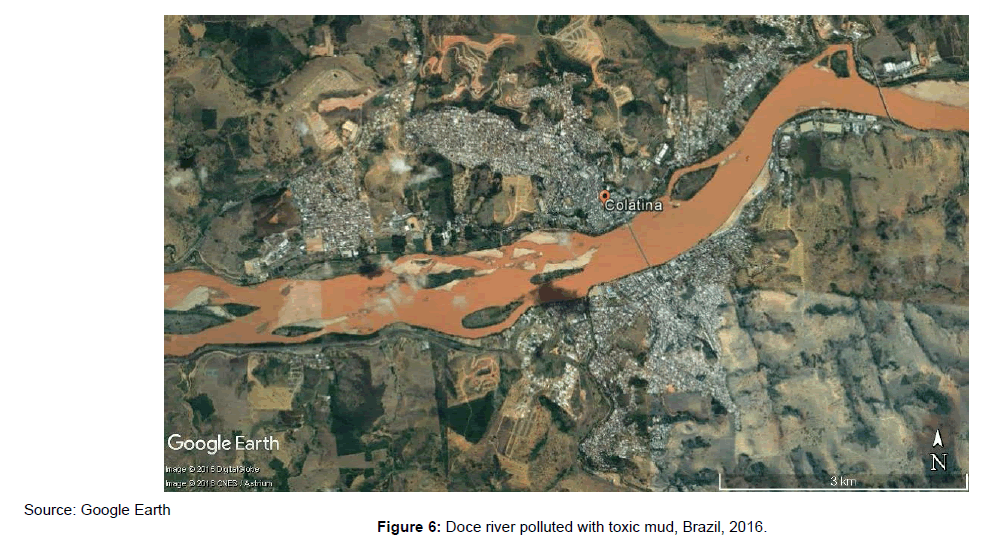Review Article Open Access
Anthropic Actions in the Environment: The Idea of “Environmental Underdevelopment”
Ronaldo de Sousa Araújo1* and Zélia Maria Peixoto Chrispim21Universidade Candido Mendes (UCAM); Institutos Superiores de Ensino do Censa (ISECENSA), Campos dos Goytacazes, RJ, Brasil
2Universidade Estadual do Norte Fluminense Darcy Ribeiro (UENF/CCT/LECIV), Campos dos Goytacazes, RJ, Brasil
- *Corresponding Author:
- Ronaldo de Sousa Araújo
Universidade Candido Mendes (UCAM)
Institutos Superiores de Ensino do Censa (ISECENSA)
Campos dos Goytacazes, RJ, Brasil
Tel: +55 22 99780 4663
E-mail: r.saraujo@hotmail.com
Received date: May 04, 2017; Accepted date: May 23, 2017; Published date: May 31, 2017
Citation: Araújo RS, Chrispim ZMP (2017) Anthropic Actions in the Environment: The Idea of “Environmental Subdesenvolvement”. Environ Pollut Climate Change 1:126.
Copyright: © 2017 Araújo RS, et al. This is an open-access article distributed under the terms of the Creative Commons Attribution License, which permits unrestricted use, distribution, and reproduction in any medium, provided the original author and source are credited.
Visit for more related articles at Environment Pollution and Climate Change
Abstract
This article discusses the idea of environmental underdevelopment. It is observed that anthropic actions in the pursuit of social and economic development often result in pollution and degradation of the environment. The objective is to draw attention to the importance of discussing and taking action to achieve environmental development on the planet. With the bibliographical revision, the problems of unsustainable land occupation, deforestation and environmental pollution were highlighted. Were given examples of deforestation in the Amazon and environmental disaster in Rio Doce. It is concluded that countries or citizens with practices of environmental degradation can not be considered developed. And that the degree of development must be measured considering also the practices and results of environmental conservation in its territory and outside it.
Keywords
Environmental preservation; Deforestation; Pollution; Virtual degradation
Introduction
Human society is constantly in search of development. In this search, anthropic actions often result in pollution and degradation of the environment. The world population has about 7 billion people and is expected to reach 9 billion by 2050 [1]. With this sharp growth, the production of food and all material consumer goods will also grow. As each country can not produce everything that is consumed in its own territory, the international trade is fundamental. The example that has become classic was the concept of virtual water created by Allan [2], in which a country when consuming a product is also consuming the water used in its production.
Economic or social development does not guarantee environmental development. In this sense, this article discusses the idea of “environmental underdevelopment”. Idea in which the country, society or citizen can be considered underdeveloped environmental that does not preserve or preserve little, the natural resources. In this sense, a country can be developed socially and economically but underdeveloped environmentally. Conversely, a country may be underdeveloped socially and economically but developed environmentally.
The world and the concern for environmental preservation have evolved a lot, Rio 92 was an important landmark, but there is still a long way to reach a balance between anthropic space and natural space. Regarding the problem of deforestation, there are still few actions regarding the preservation of the planet’s forest resources. The vegetation of river banks, surroundings of springs, forests among others, have been subtracted over time, for economic reasons but also cultural. It is important to observe and study these areas more by maps and satellite images. When viewing deforestation images, it is often more shocking than observing data in tables or graphs.
Unsustainable Soil Occupation
With the concept of sustainability [3] it is observed that anthropic actions in search of economic development is often not compatible with the environmental health of the planet.
There are many urban problems today, and from the most diverse categories, such as social, economic, constructive, environmental. Of particular note are: pollution of water resources (surface and groundwater), high demographic and built densities, deforestation, soil pollution and waterproofing, etc. All of these problems are in some way related to occupation and land use in urban and rural areas. And they can be caused by legal or illegal modifications in urban planning [4].
Deforestation
Deforestation is a frequent occurrence throughout the world. In the Amazon Forest, due to its great size and importance, in recent years these events have been observed more frequently.
According to data from the National Institute for Space Research (INPE) through the Project for Monitoring Deforestation in the Legal Amazon by Satellite (PRODES), the rate of deforestation in the Amazon from August 2015 to July 2016 was 7,989 km2, indicating an increase of 29% in relation to the previous year [5].
The data, while impressive, are not as shocking as the images of the destruction, especially those captured by satellite. The satellite images of the State of Mato Grosso – MT and Rondônia – RO (Figures 1 and 2), compared to the map of Brazil with the Amazon Forest and deforestation areas (Figure 3), clearly illustrates the scale of the problem.
In the state of Mato Grosso, the municipality of Lucas do Rio Verde, which had a population of 6,693 inhabitants in 1991 and 45,556 in 2010 (IBGE data), had a growth of agricultural area (corn and soybean plantation) of 67,351 hectares in 1990 to 390,763 hectares in 2012 [6]. In Figures 4 and 5 it is possible to observe the significant increase of deforested areas in the region of Lucas do Rio Verde.
The city is a space built in a natural environment. Any human construction is in some form or dimension, degrading the environment. Be it the construction of a house or a town, a small vegetable garden or a large soybean plantation.
The problem of the water crisis that plagues the world and that in the state of São Paulo, Brazil, has greatly frightened the population, was more associated with the lack of rainfall, management problems, lack of investments in infrastructure, and little mention was made of deforestation of the banks of surface water resources. This aspect is important to consider, because the lack of vegetation in the springs and banks of rivers and lakes interfere significantly in the quantity and quality of the water. In Brazil, despite the legislation, in the case of the Forest Code [7], the margins of these areas suffer from constant deforestation [8].
Already for some time, the United Nations draws the attention of the world to the theme Climate change. The Intergovernmental Panel on Climate Change [9] has highlighted as the cause of this phenomenon the actions of man. Some countries have taken steps to reverse the situation, however, it seems that a really sustainable development consensus is still a long way off.
Environment Pollution
Environmental pollution is a problem that affects underdeveloped and developing countries as well as developed countries. In the world, many rivers are considered extremely polluted, such as Sarno River in Italy [10], Ganga River in India, Matanza River in Argentina, Mississippi in the United States of America. In 2015 Doce River in Brazil (Figure 6) became part of this list, after the dam of the company Samarco broke, contaminating all its bed and even groundwater (State of Minas, 2017). In this case, “virtual pollution” (pollution embedded in production) was extremely significant.
Conclusion
The relationship between humanity and the environment has been changing throughout history. Significant respect in some societies, but extreme contempt in others. The instinct of natural good to be explored prevails. In today’s society, it is clear that a change of attitude is needed in the face of environmental preservation. And the concept of sustainability was the most important milestone. So, why is environmental preservation not a consolidated practice in the world? The answer is not so difficult to find. Humanity has been unable to control the insatiable pursuit of development, especially the economic one. And another aspect, which seems irrational, but which accompanies humanity throughout its history, is the search for leadership and power.
Therefore, in this idea that is discussed of “environmental underdevelopment”, the search for development can not leave aside the environment. A country or a citizen with environmental degradation practices can not be considered developed. The degree of development has to be measured considering also the practices and results of environmental conservation in its territory as well as outside it.
There should be more concern and actions in the preservation of the vegetation that protects the planet’s water resources. In the case of the devastation of the Amazon Forest this happens, mainly, because the international market demands for food and raw material.
It can not be accepted that a market based on “virtual water” is practiced freely, without major responsibilities of its agents, but also “virtual labor”, “virtual land”, “virtual degradation”, “virtual soil”, or “pollution virtual”. That is, it can not be agreed that what is not in the territory is not the responsibility of the consumer. A developed country, or one that wants to be developed, has to be responsible for “real” and “virtual” sustainable activities.
Acknowledgement
We would like to thank the Universidade Candido Mendes (UCAM), Institutos Superiores de Ensino do Censa (ISECENSA), Universidade Estadual do Norte Fluminense Darcy Ribeiro (UENF/CCT/LECIV) and Fundação Carlos Chagas Filho de Amparo à Pesquisa do Estado do Rio de Janeiro (FAPERJ).
References
- UN-Water (United Nations—Water) (2014) UN-Water Thematic Factsheets.
- Allan JA (1993) Fortunately there are substitutes for water otherwise our hydro-political futures would be impossible. Priorities for water resources allocation and management. ODA, London, United Kingdom, pp: 13-26
- Brundtland GH (1987) Report of the World Commission on Environment and Development: Our Common Future. United Nations. General Assembly, Oslo.
- Araújo RS (2010) Modificações no planejamento urbanístico: teoria e método de análise. São Paulo: Editora Nobel.
- INPE (Instituto Nacional de Pesquisas Espaciais) (2016) PRODES estima 7.989 km² de desmatamento por corte raso na Amazônia em 2016.
- Camargo KCM (2014) Agroindústria e Reorganização do Espaço em Lucas do Rio Verde (MT). Monografia. Instituto de Filosofia e Ciências Humanas da Universidade Estadual de Campinas.
- Brasil (2012) Lei No 12.651, de 25 de maio de 2012. Código Florestal. Congresso Nacional, Brasília, Brasil.
- Araújo RS, da Gloria Alves M, de Melo MTC, Chrispim ZM, Mendes MP; Silva Jr GC (2014) Water resource management: A comparative evaluation of Brazil, Rio de Janeiro, the European Union, and Portugal. Sci Total Environ 511: 815-828.
- IPCC (Intergovernmental Panel on Climate Change) (2014) IPCC Fifth Assessment Synthesis Report. Climate Change, 2014. Longer report.
- Lofrano G, Libralato G, Acanfora FG, Pucci L, Carotenuto M (2015) Which lesson can be learnt from a historical contamination analysis of the most pollyted river in Europe? Sci Total Environ 15: 246-259.
Relevant Topics
Recommended Journals
Article Tools
Article Usage
- Total views: 3213
- [From(publication date):
July-2017 - Apr 03, 2025] - Breakdown by view type
- HTML page views : 2355
- PDF downloads : 858

